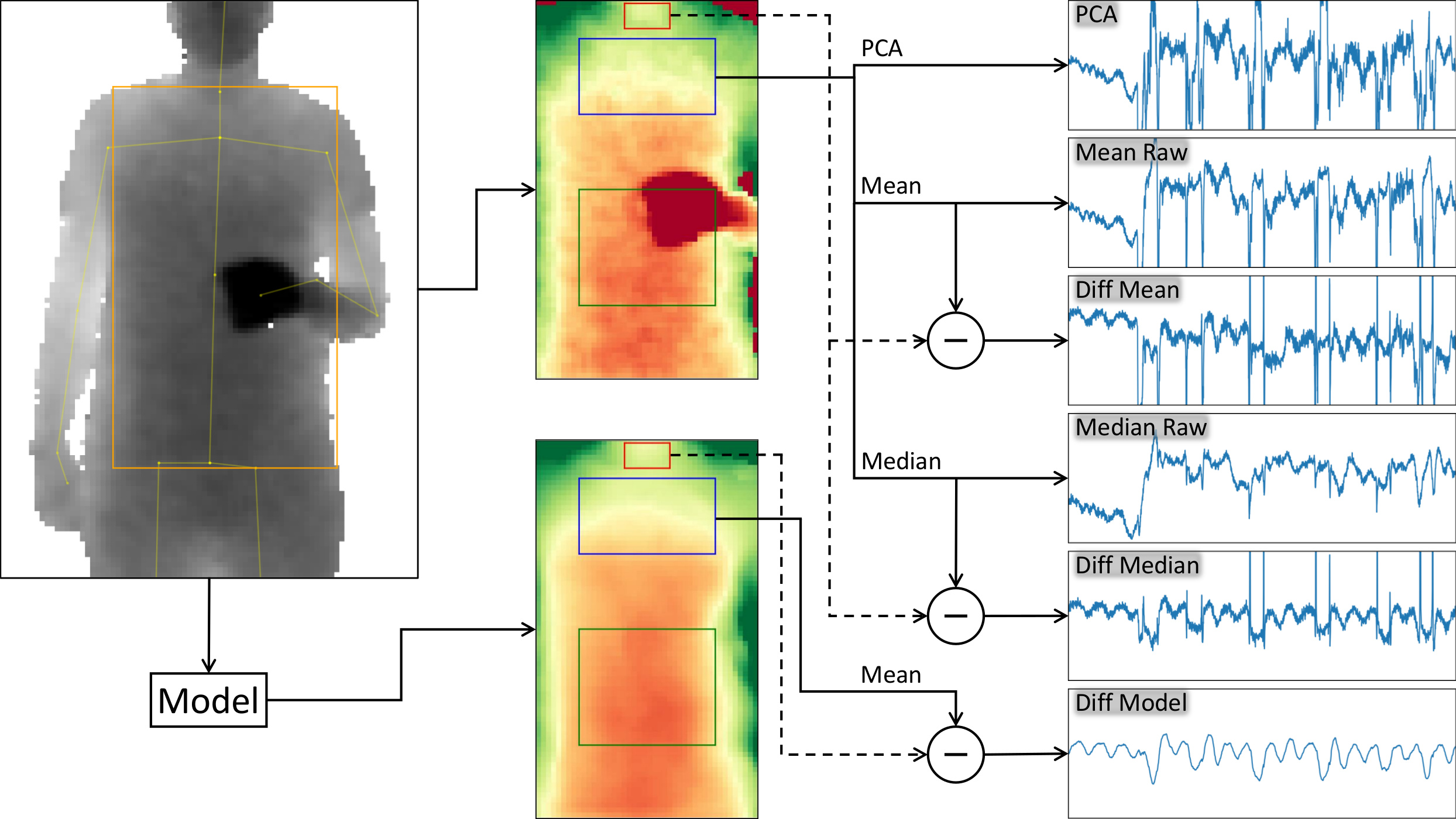Breathing In-Depth: A Parametrization Study on RGB-D Respiration Extraction Methods
Jochen Kempfle and Kristof Van Laerhoven
Description

As depth cameras have gotten smaller, more affordable, and more precise, they have also emerged as a promising sensor in ubiquitous systems, particularly for detecting objects, scenes, and persons. This article sets out to systematically evaluate how suitable depth data can be for picking up users' respiration, from small distance changes across the torso over time. We contribute a large public dataset of depth data over time from 19 persons taken in a large variety of circumstances. On this data, we evaluate and compare different state-of-the-art methods and show that their individual performance significantly depends on a range of conditions and parameters. We investigate the influence of the observed torso region (e.g. the chest), the user posture and activity, the distance to the depth camera, the respiratory rate, the gender, and user specific peculiarities. Best results hereby are obtained from the chest whereas the abdomen is least suited for detecting the user's breathing. In terms of accuracy and signal quality, the largest differences are observed on different user postures and activities. All methods can maintain a mean accuracy of above 92% when users are sitting, but half of the observed methods only achieve a mean accuracy of 51% while standing. When users are standing and additionally move their arms in front of their upper body, mean accuracy values between the worst and best performing methods range from 21% to 87%. Increasing the distance to the depth camera furthermore results in lower signal quality and decreased accuracy on all methods. Optimal results can be obtained at distances of 1 to 2 metres. Different users have been found to deliver varying qualities of breathing signals. Causes range from clothing, over long hair, to movement. Other parameters have shown to play a minor role in the detection of users' breathing.
Download
The original data and the Python code (included in the zip file) as used in the paper can be downloaded via this link: FCS'21 dataset (21.4 GB)
Citation and more information
Breathing In-Depth: A Parametrization Study on RGB-D Respiration Extraction Methods, . Frontiers in Computer Science, 3: 109, 2021.[abstract][pdf][scholar][bibtex]
Disclaimer
You may use this data for scientific, non-commercial purposes, provided that you give credit to the owners when publishing any work based on this data.
